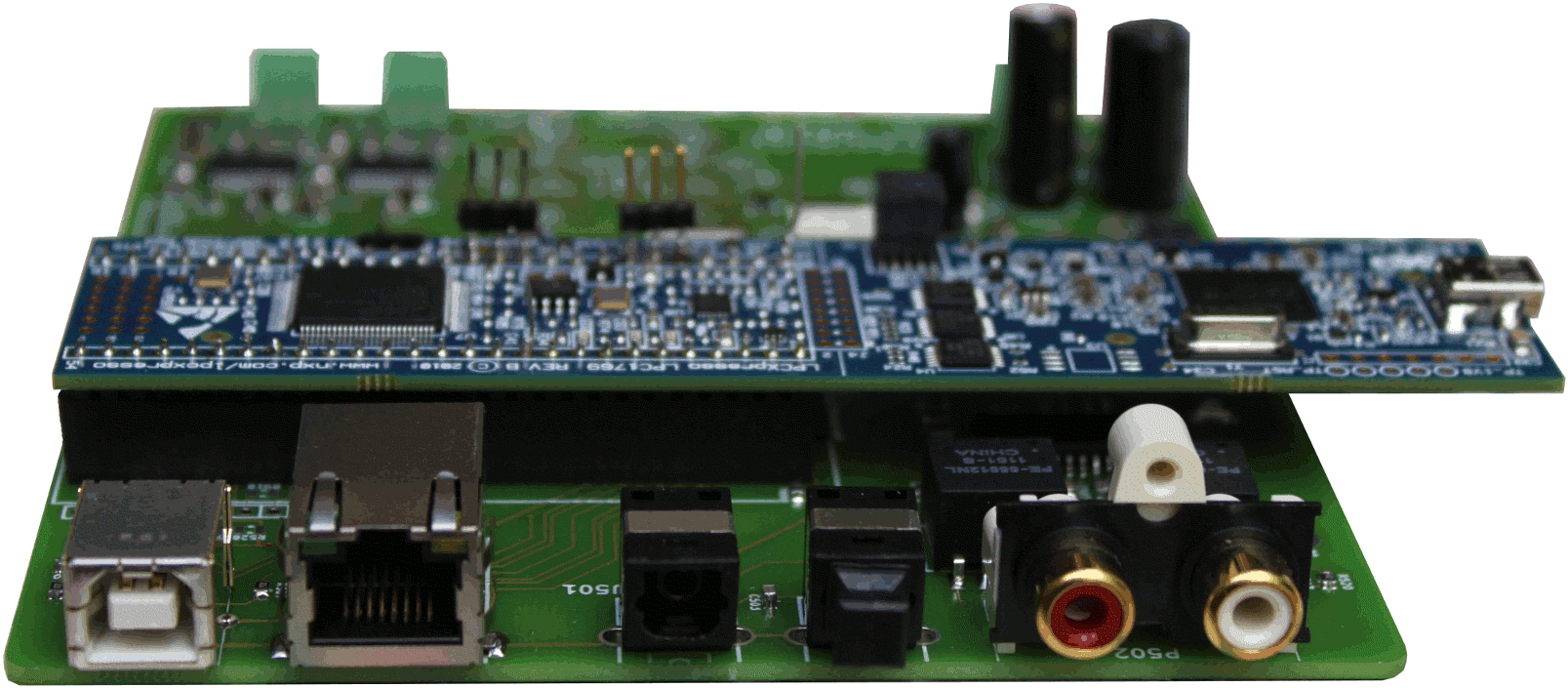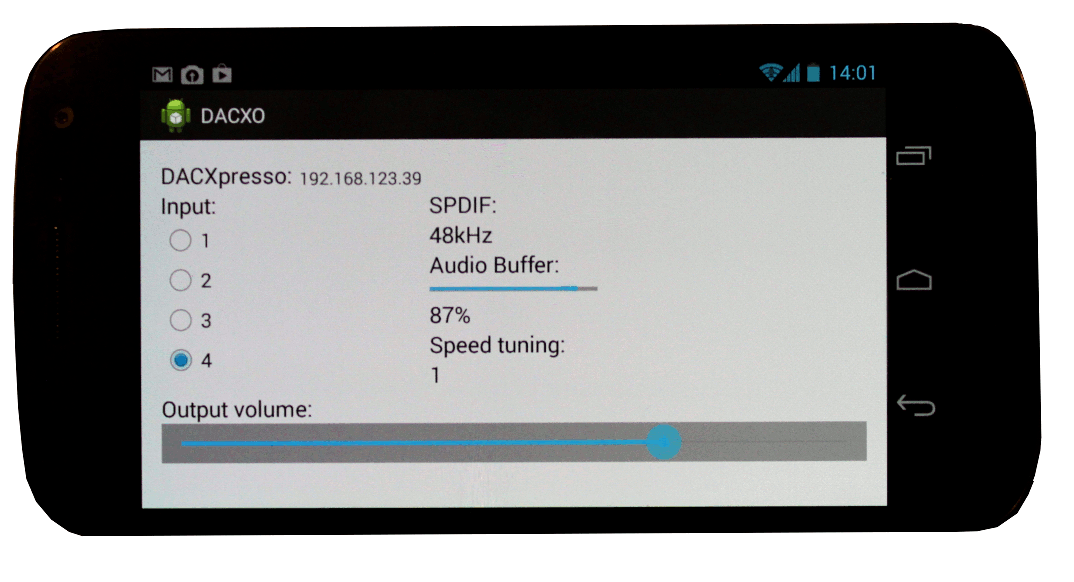DACXpresso: Audio DAC and digital preamp
Introduction
This page shows initial design information on my latest (4th generation) audio DAC,
of which the first prototype is now up and running. These are its main distinctive properties:
- The DAC has 4 digital inputs: 2 cinch and 2 optical. The cinch inputs are electrically isolated through the use of spdif signal transformers.
- To avoid undesired signal processing and leave the audio signal as clean as possible, the typical digital sample-rate converter
is by purpose avoided in this design. The DAC supports 44.1, 48, 88.2, and 96kHz input sample rates. The audio samples (their data values) are passed unmodifed to the DAC chips, after reclocking with the local crystal oscillator.
-
For the actual D/A conversion, my current PCB allows a choice to mount either a pair of
Wolfson WM8741 or a pair of
TI PCM1792a chips.
In either case, these DAC chips are used in a dual-mono mode and provide a balanced audio output.
- For use in combination with digital television, the DAC will provide an option
to delay the audio and obtain lip-sync with your TV screen.
- The stability of the clock is a major contributor to the audio quality of any DAC.
This DAC has a new design with a high-quality (low jitter) Xtal oscillator built from discrete components.
Synchronization of the audio output (conversion) clock with the SPDIF input clock is obtained through
discrete speed selections and a dual-crystal configuration.
- The digital control is implemented through a standard
LPCXpresso processor module with an ARM Cortex-M3.
Next to the control of various chips on my DAC board, the module also provides an ethernet and a USB connection.
The ethernet is intended for remote control, not for audio streaming. The chosen ethernet connector also provides
electrical isolation through a built-in transformer.
This LPC board comes with its own tiny USB connector on the side, solely for firmware programming and debugging.
The larger USB plug on the DAC board is planned for USB audio playback.
The required software support for that is not yet high on my priority list...
-
Remote control of the DAC is -for now- arranged through a dedicated Android app, allowing remote control from your (Android-)phone or tablet.
Other controls might follow later. Connections are provided for user knob(s), an LCD screen, an IR-receiver.
-
I intend to publish all project code as open-source, both the DAC (LPC1796) firmware, as well as the Android app:
A photo of the first assembled prototype PCB with the WM dacs mounted and the LPC module plugged on top:

A view on the connectors at the PCB back side:

Current status
August 1: I have first audio, which sounds really assuring: A significant improvement with respect to my earlier designs.
The DAC now plays with a passive output directly from the WM dac chips to a balanced input of my
Relaixed. I would still need (considerable) time to create an active output buffer.
That would be needed for proper stand-alone operation of this design as preamplifier.
My first Android app for control is also up and running. The app automatically finds the (IP number of)
the DACXpresso in the local network. No fancy graphics, but basic and working controls:

Back to RelaiXed,
RelaiXedSMD, my start page.
Jos van Eijndhoven
Aug. 20, 2013



